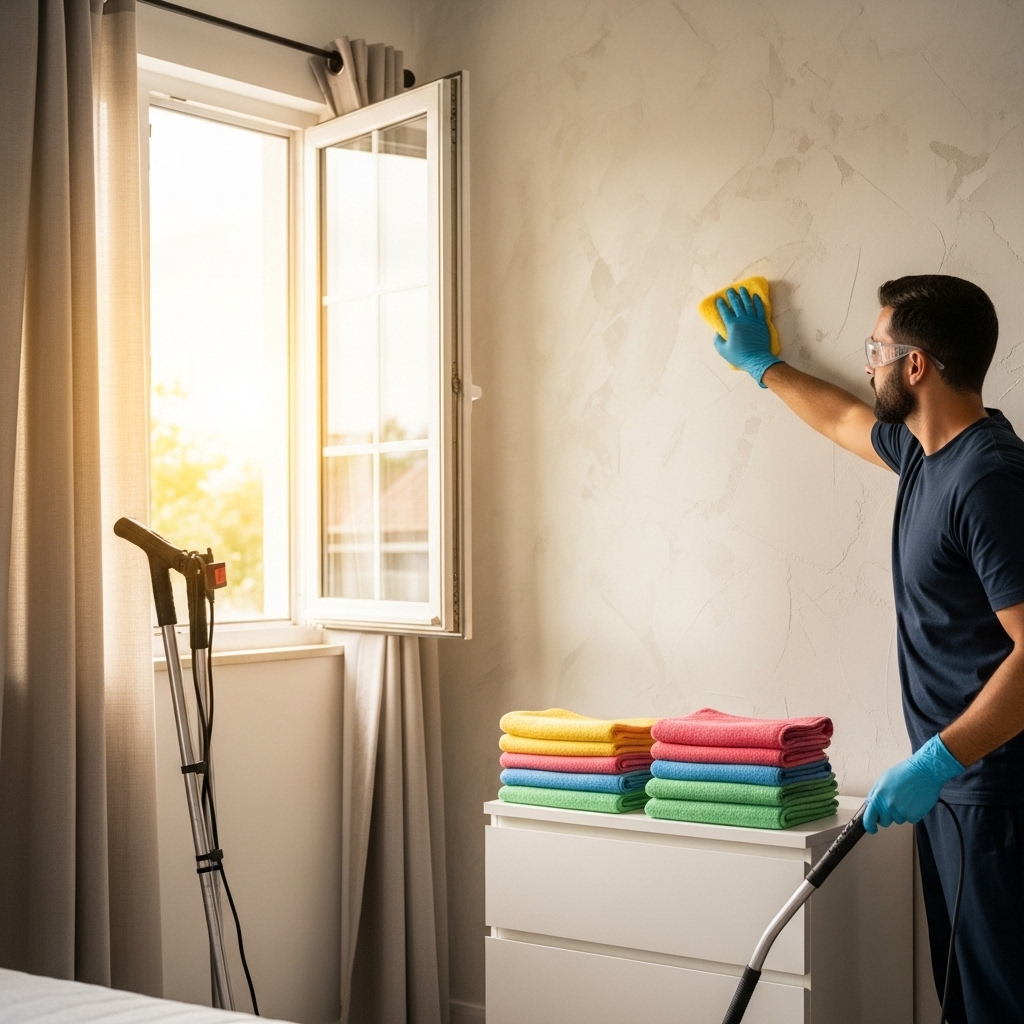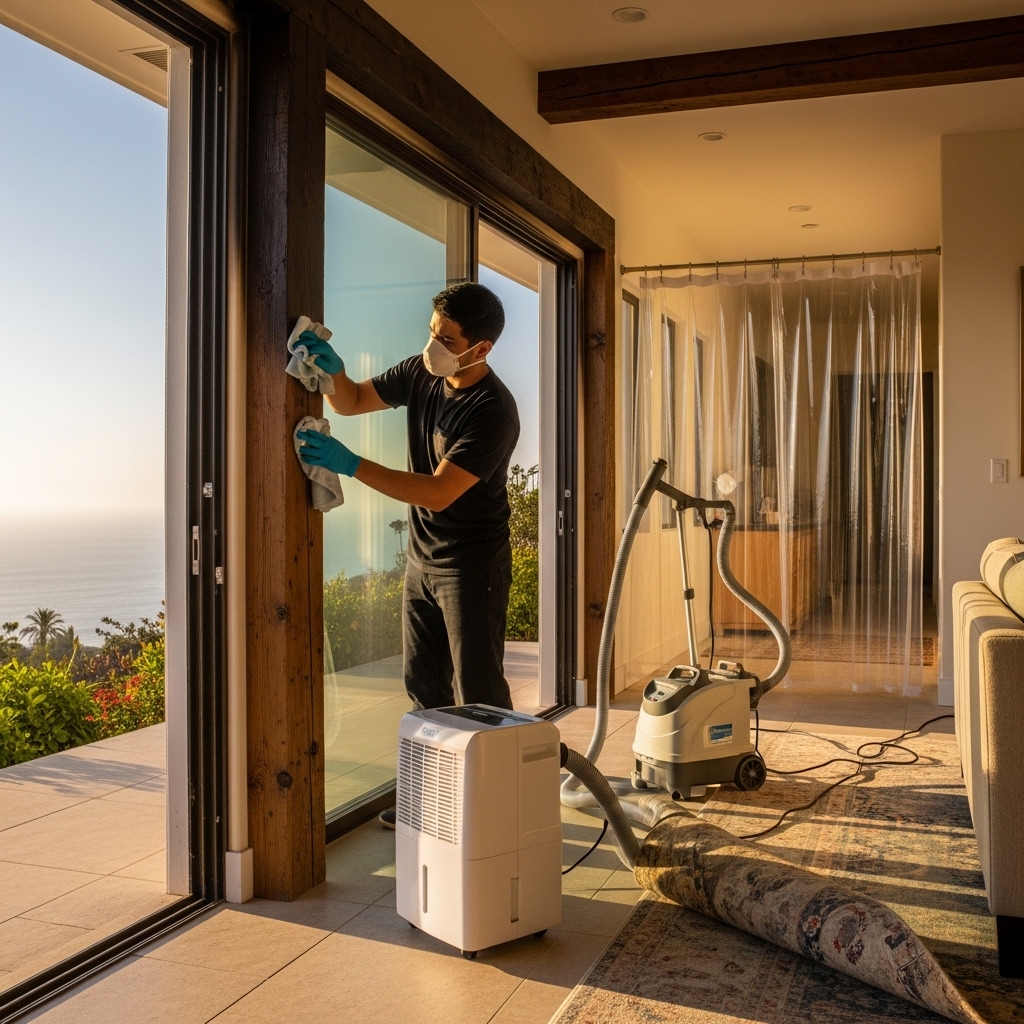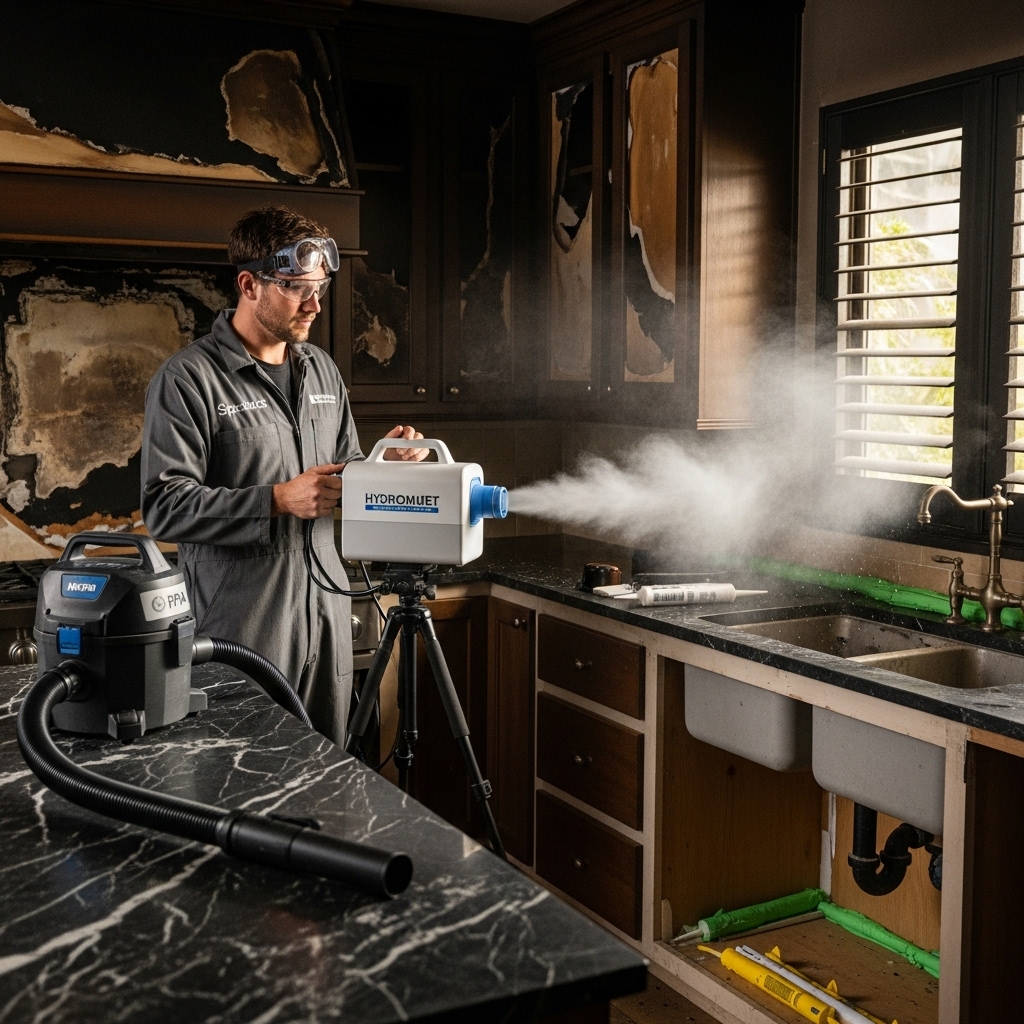Introduction
Smoke impacts a home long after a fire is out. In Canoga Park, California, where warm, dry weather and periodic winds can drive particulates deep into structures, homeowners benefit from a clear plan for cleanup, deodorization, and prevention. This comprehensive guide explains exactly how to address each area of your property—from attics and HVAC to kitchens, bedrooms, and garages—so you can restore comfort and safety. If you prefer trained help or want verification that your home is fully cleaned, consider partnering with local specialists in smoke damage restoration who understand neighborhood construction styles and climate realities.
Unlike soot from a fireplace, residues from a household fire or outside smoke intrusion are often acidic, sticky, and odorous. They cling to paints and plastics, corrode metals, and sink into fabrics and insulation. A successful plan pairs careful dry cleaning, targeted wet cleaning, and scientifically sound deodorization—followed by validation and prevention measures to keep odors from returning.
Know Your Smoke: Protein, Natural, and Synthetic
Determining the dominant smoke type helps you choose effective methods for each surface. Kitchen fires release protein smoke that is light in color, intensely odorous, and oily to the touch. Natural wood smoke usually produces drier residues that are easier to vacuum but can still smear if handled roughly. Plastics, foams, wiring insulation, and synthetic textiles generate corrosive residues that may etch finishes and discolor plastics if not addressed quickly.
- Protein smoke: Demands degreasers and patient, repeated cleaning passes.
- Wood smoke: Often responds to dry sponges first, then mild detergent washes.
- Synthetic smoke: Time sensitive; protect metals and electronics promptly.
Immediate Safety and Stabilization
Prioritize health and structural safety. Wear gloves and a respirator with P100 filters during heavy cleaning. Do not re-energize circuits or appliances that were exposed to heat or soot until inspected. Keep children and pets away from work zones. Maintain controlled ventilation by exhausting air outward and shutting down the central HVAC until filters are changed and ducts evaluated. Containment—closing doors, using door sweeps, and taping plastic over openings—prevents cross-contamination.
Room-by-Room Strategy for Homes
Every room requires the same overall sequence—assessment, dry cleaning, wet cleaning, deodorization, and validation—but each has specific considerations. Kitchens need heavy degreasing. Bedrooms call for textile triage and mattress evaluation. Living rooms may contain electronics and media that require careful handling. Garages and attics often harbor porous, unsealed materials that absorb odor readily.
Assess, Document, and Plan
Walk the property with a notebook and camera. Capture wide and close-up photos, noting odor intensity and residue type. List items by salvageability and prioritize high-value or sensitive belongings such as heirlooms, instruments, and electronics. Decide which areas you will handle yourself and where professionals are best used—attic insulation removal, for example, or heavy protein smoke cleanup in a kitchen.
Dry First, Then Wet
Begin with HEPA vacuuming using a brushless tool to collect loose particulates. Follow with dry cleaning sponges on walls, ceilings, trim, and cabinetry. Replace sponges as they load with soot. Only after the first layer is removed should you use wet methods—mild detergents escalating to restoration-grade cleaners. Work top to bottom, small sections at a time, and rinse thoroughly.
Kitchens: Tackling Stubborn Protein Smoke
Kitchen fires deposit greasy films on cabinets, ceilings, and appliances. Use a degreaser suitable for painted and laminated surfaces. Clean hardware, hinges, and the undersides of cabinets where vapors condense. Remove range hood filters for degreasing or replacement. Inspect inside the oven, microwave vents, and refrigerator gaskets. Multiple passes are normal; patience and systematic rinsing reduce streaks and odor.
Bedrooms and Textiles
Textiles trap odor deeply. Strip bedding, curtains, and removable upholstery covers. Launder test loads with odor-eliminating additives before committing to large batches. For mattresses, HEPA vacuum all sides, lightly treat with approved deodorizing agents, and allow extended drying. Consider professional treatment for feather pillows, wool blankets, and delicate fabrics. Store cleaned items in sealed bins until the home is fully deodorized.
Living Spaces and Electronics
Living rooms often contain electronics, artwork, and mixed materials. Keep devices powered off and covered until inspected. HEPA vacuum media shelves and use dry sponges on painted walls first. Glass, stone, and metal surfaces typically clean well with non-ammonia solutions after soot removal. Be meticulous around entertainment centers and cable runs where fine soot collects.
Bathrooms and Laundry Areas
Check exhaust fans, light fixtures, and behind appliances. Clean and deodorize gaskets on washers and dryers. Replace furnace or closet louver door filters that may have captured smoke. Wipe down shower curtains, rods, and tile grout with appropriate cleaners after initial dry removal.
Attics, Garages, and Storage
These areas often contain raw wood framing, insulation, cardboard boxes, and stored fabrics—all odor magnets. HEPA vacuum exposed framing and sheathing gently, then consider sealing raw wood with odor-blocking primers after cleaning and drying. Evaluate insulation: if odors persist and material is contaminated, replacement is often the most reliable solution. In garages, inspect tool chests, rubber hoses, and lawn equipment for soot and odor, cleaning with degreasers and wiping tools with lightly oiled cloths to prevent corrosion.
Deodorization: Combine Methods for Lasting Results
Odor elimination comes from removal plus counteraction. After cleaning, apply smoke-specific odor neutralizers to surfaces and textiles. For whole-home treatment, methods may include thermal fogging and hydroxyl or ozone treatments administered by trained personnel with appropriate safety protocols. Validate progress by stepping outside periodically to reset your sense of smell before re-entering. If the center of your home still carries a noticeable odor even after multiple passes, that is a sign to re-check hidden voids, insulation, and ducting—or to bring in professional smoke damage restoration support for advanced deodorization.
HVAC: Filters, Ducts, and Air Handler
The HVAC system can re-contaminate your home. Replace filters with high-MERV options and change them again after major cleaning phases. Vacuum registers and returns with a HEPA unit, remove and wash grilles, and inspect the air handler cabinet. If you detect soot inside ductwork or persistent odor when the system runs, schedule duct cleaning and coil inspection.
Hard Surfaces and Flooring
Tile, stone, and sealed hardwoods typically respond well to alkaline cleaners followed by neutral rinses. Avoid saturating wood floors; use minimal water and quick-dry techniques. For luxury vinyl and laminates, minimize moisture at seams and edges. Countertops may need repeated passes to eliminate fine films that dull the finish.
Windows, Doors, and Trim
Clean glass and frames after soot removal, then evaluate weatherstripping. Canoga Park homes often benefit from upgraded seals that reduce future smoke intrusion during regional wildfire events. Clean and lubricate hinges and locks to protect against corrosion.
Insurance and Documentation for Homeowners
Maintain a detailed log with photographs, item lists, cleaning products, and dates. Keep samples of heavily damaged materials if requested by your insurer. If you hire specialists, ensure the scope of work includes containment, air filtration, cleaning protocols, deodorization steps, and verification benchmarks.
Prevention and Resilience
Lower your future risk by sealing penetrations around pipes and wires, adding door sweeps, and upgrading HVAC filters. Create a clean storage plan that reduces porous cardboard in attics and garages. Maintain defensible space outdoors and service roof and soffit vents to minimize smoke intrusion during wind events.
Common Mistakes to Avoid
- Skipping dry cleaning; wet methods alone can smear soot.
- Powering electronics too soon.
- Ventilating without containment, which spreads contamination.
- Rushing deodorization before cleaning is complete.
- Neglecting attics and insulation that hold odor.
Frequently Asked Questions
Q: How long does smoke odor removal take in a typical home? A: Timelines vary from a few days to several weeks depending on contamination level, home size, and whether insulation or ducts are involved.
Q: Can I paint over smoke stains? A: After thorough cleaning and drying, use a quality odor-blocking primer before paint. Painting without proper prep risks bleed-through and lingering odors.
Q: What should I do with children’s toys and baby items? A: Hard toys can often be cleaned and disinfected. Soft toys may require specialized laundering or replacement if odors persist.
Q: Are DIY deodorizing sprays enough? A: Sprays may help but are not a substitute for source removal, material-specific cleaning, and whole-home deodorization where needed.
Q: When is insulation replacement necessary? A: If insulation has absorbed odor or visible soot and continues to off-gas after cleaning surrounding materials, replacement is often the most reliable fix.
Q: Do air purifiers help? A: HEPA purifiers capture particulates and can improve indoor air quality, but they do not remove soot embedded in materials. Use them alongside cleaning and deodorization.
Ready to Make Your Canoga Park Home Feel Like Home Again
Restoring a house after smoke exposure is a detailed process, but with the right sequence and persistence, you can reclaim clean air and comfortable living spaces. If you want expert guidance, specialized equipment, and verified results, contact local professionals for trusted smoke damage restoration and take the fastest route back to a safe, fresh-smelling home.


